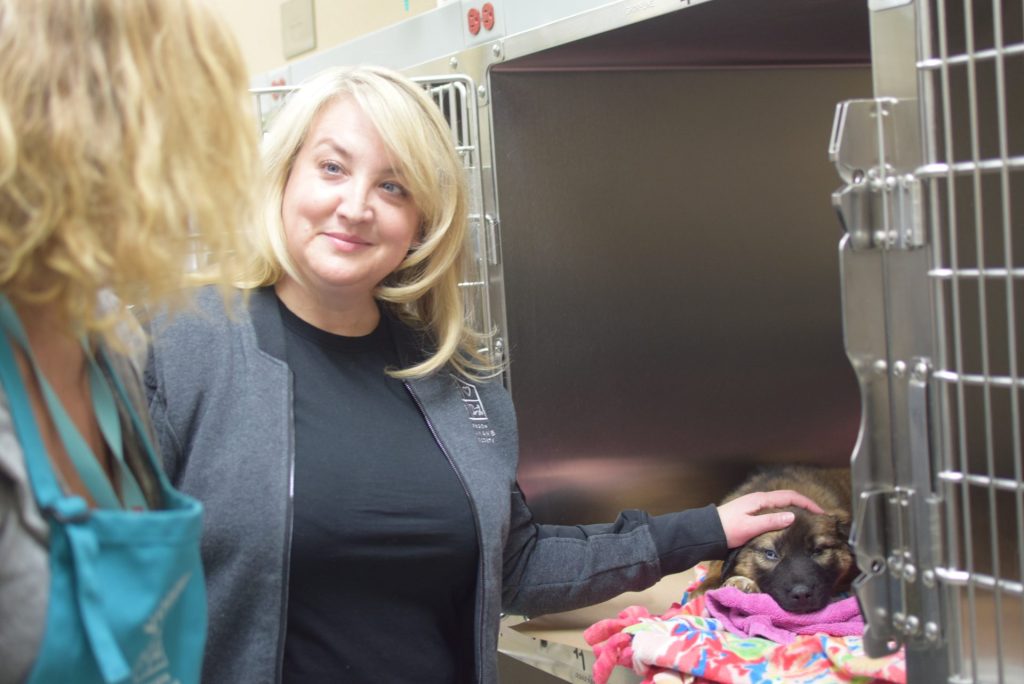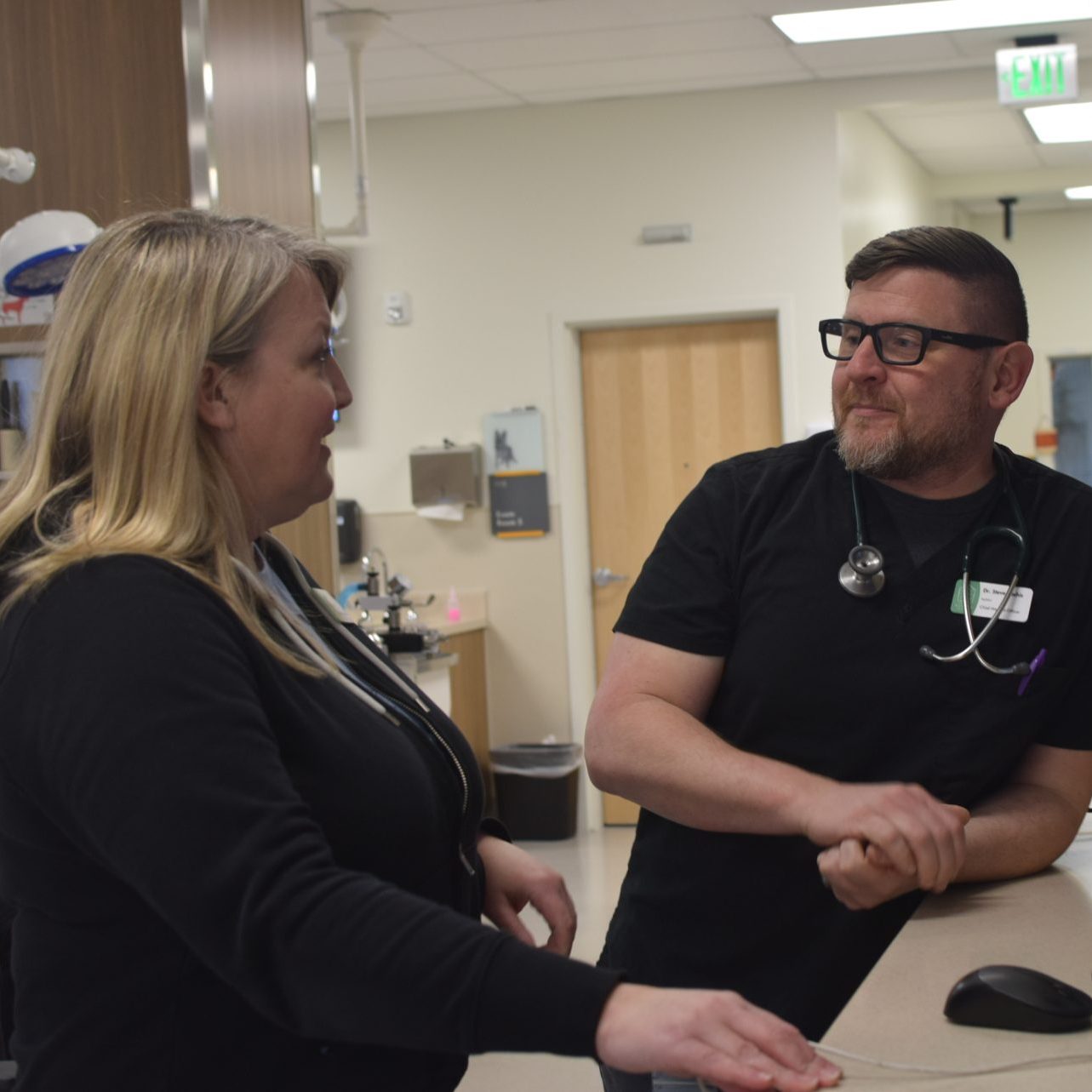What is Veterinary Social Work?
Veterinary social work is a growing specialty that recognizes the deep connection between pets and their families, and the complex challenges that can arise when navigating barriers to housing, healthcare, and social services.
“When pet owners come to Oregon Humane Society for assistance with veterinary care, rehoming a pet, or during a crisis, we know there is a person connected to that animal who may also need support,” says Dr. Steve Kochis, Chief Medical Officer and Interim CEO. “As a leader in animal welfare, having a veterinary social worker on staff at OHS has been critical to caring for our community and helping staff navigate the emotional toll of this work.”
Increasingly, animal welfare organizations across the country are recognizing the benefit of having a veterinary social worker but clear guidance on structuring and supporting these roles has been missing until now.

Social Work in Animal Welfare (SWAW) Guidelines
Kelly Bremken, MSSW, VSW, CSWA, has been OHS’ Veterinary Social Worker since 2021 and co-led the development of Social Work in Animal Welfare (SWAW) Guidelines that were introduced Oct. 4, World Animal Day. The guidelines were developed over 18 months in a participatory action research process with social workers across the United States and Canada. The project was made possible through funding by the ASPCA.
“These guidelines mark a historic milestone in bridging human and animal well‑being”
Kelly Bremken
The SWAW Guidelines provide social work best practices, including the following highlights.
- Support for human-animal families alongside animal welfare professionals
through trauma-informed and client-centered care - Reductions in forced pet surrenders through access-to-care and financial equity tools
- Strengthened staff well-being within animal welfare organizations
- Advancement of equity-informed service delivery that is responsive to cultural, racial,
and socioeconomic factors - Advocacy for community and policy changes to benefit both people and animals



A link to SWAW Guidelines via the International Veterinary Social Work Association, a project partner, can be found here.
“Seventy-one percent of U.S. households have a pet. Over 90 percent of those households say their pets are family,” says Dr. Janet Hoy-Gerlach, Director of Veterinary Social Work at Open Door Veterinary Collective and project co-lead. “Companion animal well-being is interconnected with the well-being of people. The SWAW Guidelines equip social workers to apply their skills in animal welfare settings to foster human and community empowerment, enhancing the well-being of people and animals.”
A One Health and Human Rights Perspective
The SWAW Guidelines are grounded in the National Association of Social Workers (NASW) Code of Ethics, reflecting a One Health approach — a recognition that human health, animal health, and community health are deeply interconnected. The guidelines also fully align with human rights principles, affirming that no one should be forced to choose between their own well-being and the companionship of their animal.
The SWAW Guidelines invite social workers, animal welfare professionals, donors, funders, and policymakers to join together in creating solutions that honor the vital bond between people and animals.
“The SWAW Guidelines reflect the voices of practitioners across North America,” said Kayla Anderson, LMSW, a project co-lead from the Program for Pet Health Equity at the University of Tennessee. “They are practical, ethical, and visionary, designed to help social workers and animal welfare professionals collaborate to keep families with pets healthy, safe, and together.”





